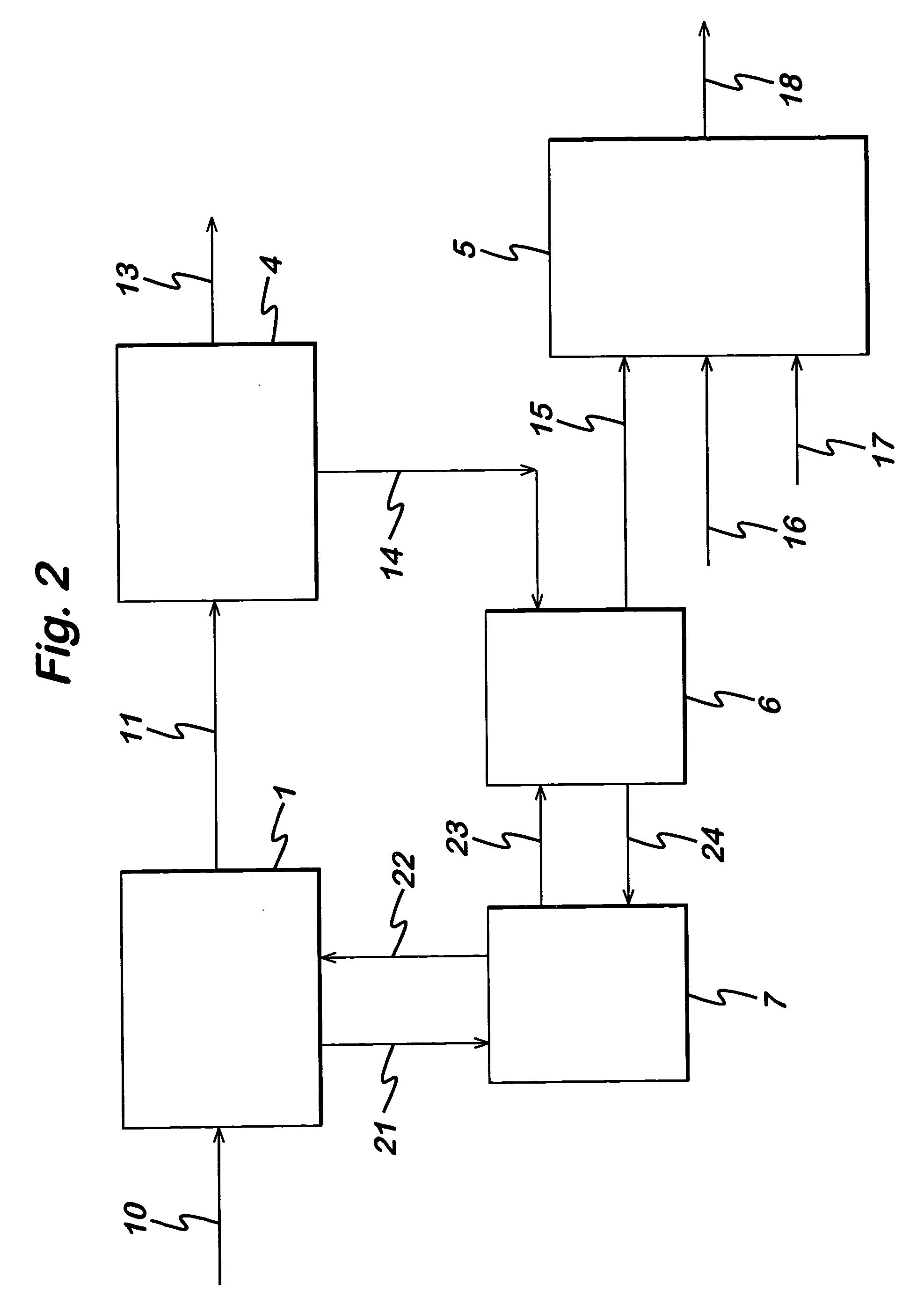Method for reducing nitrogen oxide emissions in industrial process
a technology of industrial process and nitrogen oxide, applied in the field of new methods for reducing nitrogen oxide emissions in industrial processes, can solve the problems of not providing a method for preventing nox production, nox after treatment, and nox production, and achieve the effect of reducing nox emissions in industrial processes
- Summary
- Abstract
- Description
- Claims
- Application Information
AI Technical Summary
Benefits of technology
Problems solved by technology
Method used
Image
Examples
Embodiment Construction
[0027] Referring now to the process configuration of FIG. 1, an example is provided illustrating the improved and novel features of a specific embodiment of the present invention. This specific embodiment relates to an acrylic acid production process.
[0028] Here a feed stream comprising primarily propylene, propane, nitrogen, oxygen, water, and other organics is fed into the reaction section 100 of an acrylic acid production process. Reaction section 100 comprises an SRS reactor.
[0029] The feed mixture 10 is derived from three conventional sources: a) a recycle waste stream from an aqueous absorber that is part of a typical acrylic acid separation process step; b) a fresh atmospheric air feed stream from a process air compressor; and c) a chemical grade propylene stream from a supplier comprising of propylene and propane. While it is preferred that the propylene / propane feed be of chemical grade, this stream could also be refinery grade, polymer grade, or various mixes of olefins co...
PUM
| Property | Measurement | Unit |
|---|---|---|
| pressure | aaaaa | aaaaa |
| temperature | aaaaa | aaaaa |
| temperature | aaaaa | aaaaa |
Abstract
Description
Claims
Application Information
 Login to View More
Login to View More - R&D
- Intellectual Property
- Life Sciences
- Materials
- Tech Scout
- Unparalleled Data Quality
- Higher Quality Content
- 60% Fewer Hallucinations
Browse by: Latest US Patents, China's latest patents, Technical Efficacy Thesaurus, Application Domain, Technology Topic, Popular Technical Reports.
© 2025 PatSnap. All rights reserved.Legal|Privacy policy|Modern Slavery Act Transparency Statement|Sitemap|About US| Contact US: help@patsnap.com



